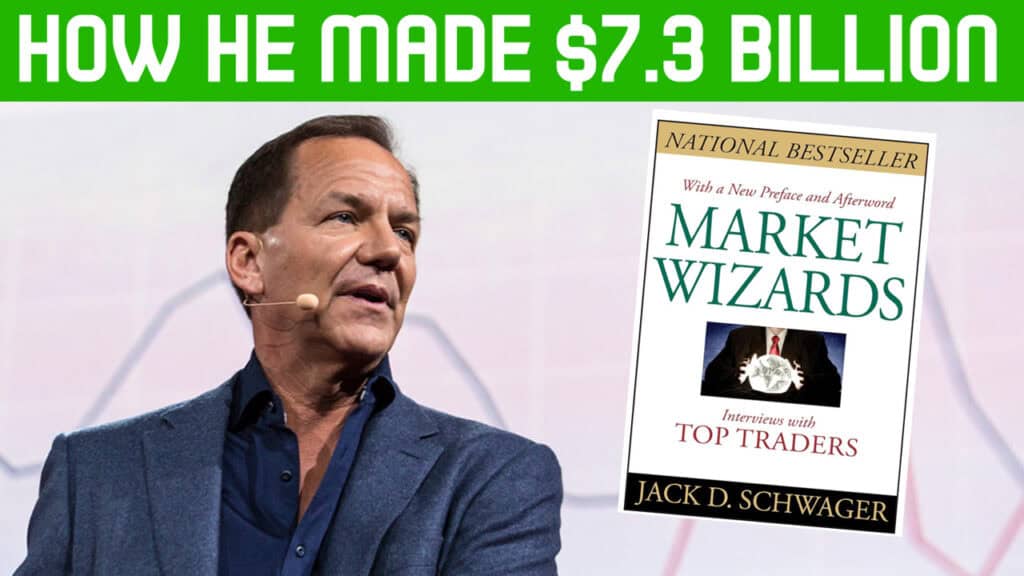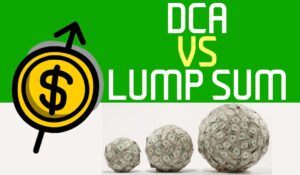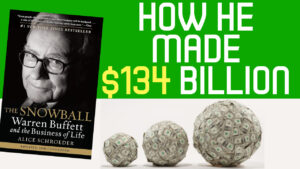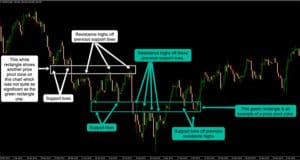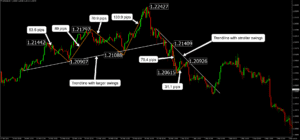Jack Schwager wrote Market Wizards to help discover the secrets of the world’s best traders. Do the greatest traders share similar qualities between them? To find out Jack interviewed 17 of the best traders including hedge fund billionaire Paul Tudor Jones. We’ll start by looking at a background into his life and later look into his tips and tricks to beat the market.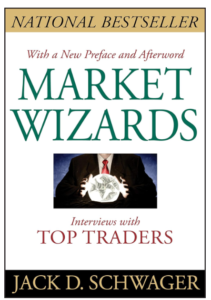
A Fascinating Background Story
According to Forbes, Paul Tudor Jones has over $7.3 billion net worth which is incredible. After graduating in 1976, he declined an offer to go to Harvard even though he was accepted and instead chose to learn how to trade.
He started learning from Eli Tullis, an experienced commodities broker based in New Orleans. Jones, only 24 at the time, started learning how to trade cotton futures on the New York Cotton Exchange. After only three and a half years he had just one losing month.

Only four years after graduating, Jones founded Tudor Group in 1980 as he was eager to create a company with a strong dedication to better serve client objectives. By 2023, Tudor Investment Corporation’s assets under management increased to more than $12 billion, however despite this, the company only has a little over 300 employees.
An incredible event in the life of Paul Tudor Jones was the Black Monday market crash in 1987. The stock market saw a collapse that rivalled the crash of 1929 as the Dow Jones crashed by 22% from the opening bell to the close of the day.
However, Jones was one step ahead.
He predicted the crash and made over $100 million in profit on that day by holding short positions on futures contracts. Having ended the month up an incredible 62%, Jones would gain a great following and become well-known as a contrarian trader.
A fascinating fact is that the documentary called ‘Trader’ was created about him due to his incredible return from Black Monday in 1987. Few copies are still available, perhaps because he thought too many secrets would be given away.
During his interview, Jack Schwager noted that not only has he achieved great returns consistently, but he’s also achieved it with highly uncorrelated performance compared to other money managers. Tudor Investment Corporation has a rich history in global macro trading in private and public markets. The company also has significant experience and capabilities in model-driven and systematic investment strategies.
Risk Control
A major takeaway Jack Schwager mentions in the book is Jones’s prioritization of controlling risk. He claims to always focus more on how much money he could lose compared to how much he could make. To help him control how much money he could lose, he applies a stop loss related to the stock price and the amount of time invested in it. For example, if he buys a position in the Nasdaq that drops by 5%, he might wait a few weeks before deciding to exit the trade.
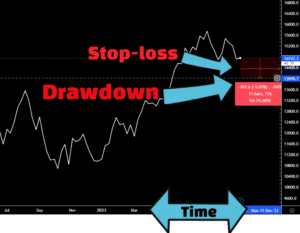
His extreme focus on risk control came after he suffered a terrible experience trading cotton early in his career. He was trading with way too large a position size compared to his account size, so since then he has prioritized how much he could potentially lose.
Interestingly, his strategy cuts all trades when reaching negative double-digits in a month. He believes reducing position size is better when losing money and in drawdown.
Regarding risk management he says, “The most important rule is to play great defense, not great offense. Every day I assume every position I have is wrong. I know where my stop risk points are going to be. I do that so I can define my maximum drawdown. Hopefully, I will spend the rest of the day enjoying positions going in my direction. If they are going against me, then I have a game plan for getting out”.
Strategy
Let’s now move on to how Paul Tudor Jones combines various types of analysis to build his strategy. First and foremost, he’s a huge believer in global macro trading, often taking positions based on economic and political news.
Being a contrarian, he often looks for market trend reversals as he says, “I believe the very best money is made at the market turns, everyone says you get killed trying to pick tops and bottoms and you make all your money by playing the trend. For 12 years I have been missing the meat in the middle, but I have made a lot of money at tops and bottoms”.
In addition to his fundamental macro approach, Jones is also a fan of technical analysis. He uses charting tools like trend lines, moving averages, and MACD to help look for potential trade opportunities. He also uses technical analysis to help him manage his risk by placing a stop loss relative to his price action analysis.
Another key tool he uses is the 200-day moving average for a potential trend-turning point. Additionally, he uses support and resistance to go along with his other forms of analysis.
Analyzing price data helps Jones realize how the markets are driven by human emotions that repeat. An example was when he used chart patterns to help him predict the Black Monday crash in 1987. Jones and his colleague Peter Borish would study the market compared to the 1929 crash to realize shocking similarities. They used the data to make over 100 million dollars from the crash and become famous for one of the most incredible trades ever.
Jones is able to make a consistent profit over time by combining both fundamental and technical analysis. Additionally, Jones often applies active money management to make decisions about a position regarding buying, selling, or holding. As he likes to analyze short-term price fluctuations, he closely monitors each position frequently to adapt to changing market environments.
Avoiding averaging into losing positions and aiming for a larger reward-to-risk ratio are two of his money management recommendations. He says, “I’m always thinking about losing money as opposed to marking money. Don’t focus on making money, focus on protecting what you have. The market will be there in 30 years, but the question is will you be.”
Psychology
He recommends less-experienced traders that if they feel like they lack control, they should exit the trade because they can always get back into the market. It’s crucial not to have a big ego and one should always question themselves and their ability. As soon as one starts feeling comfortable and believes everything is in control is the time when things begin to falter.
One can only control their actions and how to best adapt to ever-changing market conditions.
Jones has not been without criticism, and one notable moment was during the 2008 financial crisis. During the crisis, he was a major player in aggressive short-selling strategies, contributing to the decline while making huge profits.
On the positive side however, Jones is a passionate philanthropist, and in 1988 he founded the Robin Hood Foundation charity. The charity provides poverty relief in New York and has provided hundreds of millions of dollars to help healthcare and education programs.
Jones is also dedicated to environmental protection and has received Natural Resources Defence Council accolades. He’s a member of the World Resources Institute and has received a doctorate from the University of Glasgow for his humanitarian efforts.
Since the mid-1980s, Paul Tudor Jones has been one of the world’s top traders as discipline and risk management greatly contributed to his incredible success. Also, his ability to build relationships with market makers, dealers, and traders to gain access to useful information has been a major part of his success.
It’s also important to realize that trading with huge amounts of capital is different, and trying to replicate his approach would make little sense for the average retail trader. Despite this, we can take great lessons from his journey and be inspired by what is achievable.
Overall, Paul Tudor Jones’ influence in finance and philanthropy is enormous. I recommend picking up a copy of Market Wizards to find out more. If you found value in reading this, check out the other fascinating stories in the Book Summaries section of the website.

